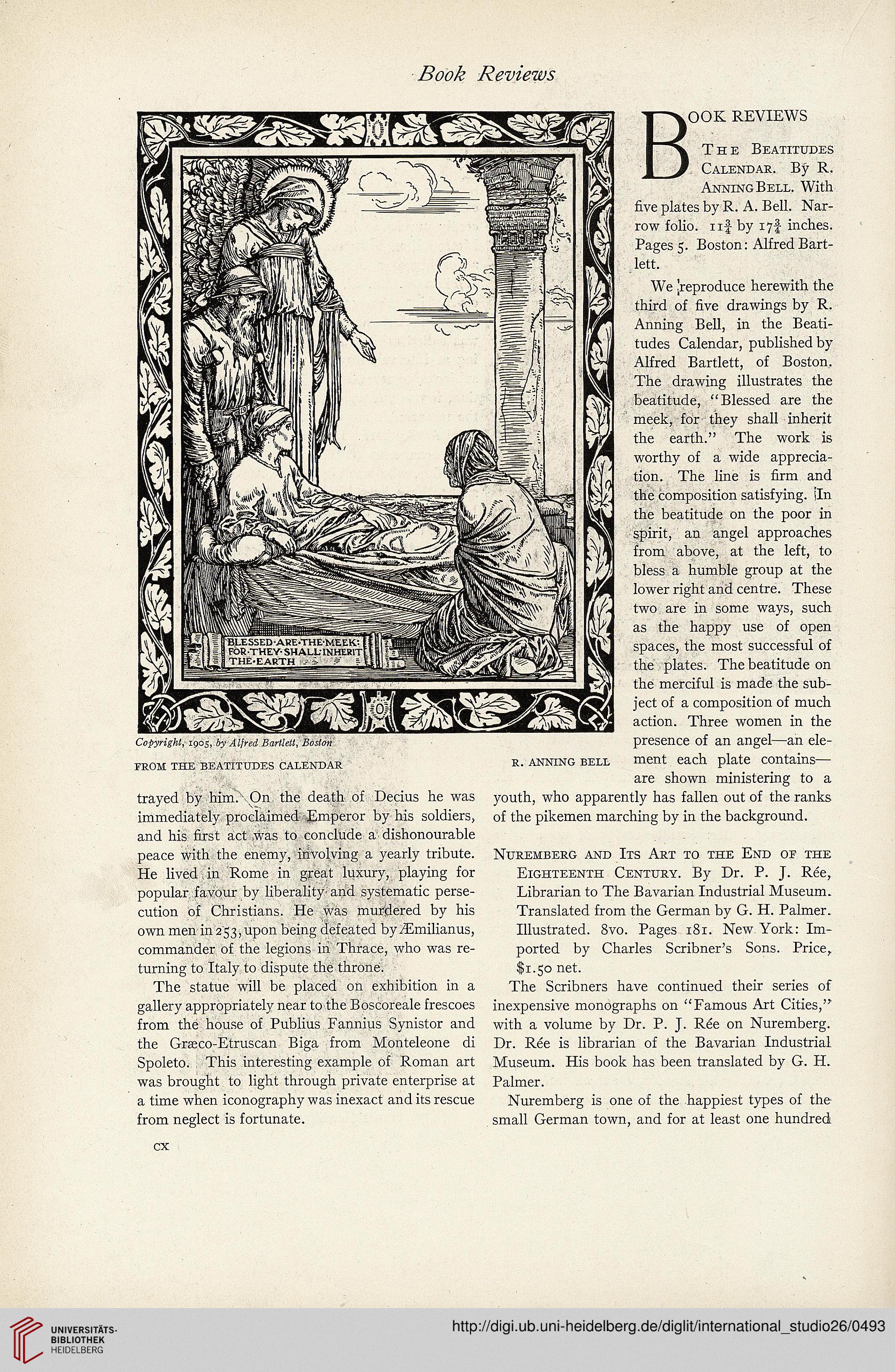1905, J5o^OM
FROM THE BEATITUDES CALENDAR
trayed by him. On the death of Decius he was
immediately proclaimed Emperor by his soldiers,
and his first act was to conclude a dishonourable
peace with the enemy, involving a yearly tribute.
He lived in Rome in great luxury, playing for
popular favour by liberality and systematic perse-
cution of Christians. He was murdered by his
own men in 253,upon being defeated byA5milianus,
commander of the legions in Thrace, who was re-
turning to Italy to dispute the throne.
The statue will be placed on exhibition in a
gallery appropriately near to the Boscoreale frescoes
from the house of Publius Fannius Synistor and
the Grseco-Etruscan Biga from Monteleone di
Spoleto. This interesting example of Roman art
was brought to light through private enterprise at
a time when iconography was inexact and its rescue
from neglect is fortunate.
y^OOK REVIEWS
THE BEATITUDES
§ ^ CALENDAR. By R.
ANNINGBELL. With
five plates by R. A. Bell. Nar-
row folio. n§ by 17^ inches.
Pages g. Boston: Alfred Bart-
lett.
We [reproduce herewith the
third of five drawings by R.
Aiming Bell, in the Beati-
tudes Calendar, published by
Alfred Bartlett, of Boston.
The drawing illustrates the
beatitude, "Blessed are the
meek, for they shall inherit
the earth." The work is
worthy of a wide apprecia-
tion. The line is firm and
the composition satisfying, iln
the beatitude on the poor in
spirit, an angel approaches
from above, at the left, to
bless a humble group at the
lower right and centre. These
two are in some ways, such
as the happy use of open
spaces, the most successful of
the plates. The beatitude on
the merciful is made the sub-
ject of a composition of much
action. Three women in the
presence of an angel—an ele-
ment each plate contains—
are shown ministering to a
youth, who apparently has fallen out of the ranks
of the pikemen marching by in the background.
NUREMBERG AND ITS ART TO THE END OF THE
EIGHTEENTH CENTURY. By Dr. P. J. Ree,
Librarian to The Bavarian Industrial Museum.
Translated from the German by G. H. Palmer.
Illustrated. 8vo. Pages 181. New York: Im-
ported by Charles Scribner's Sons. Price,
$i.go net.
The Scribners have continued their series of
inexpensive monographs on "Famous Art Cities,"
with a volume by Dr. P. J. Ree on Nuremberg.
Dr. Ree is librarian of the Bavarian Industrial
Museum. His book has been translated by G. H.
Palmer.
Nuremberg is one of the happiest types of the
small German town, and for at least one hundred
R. ANNING BELL
CX





